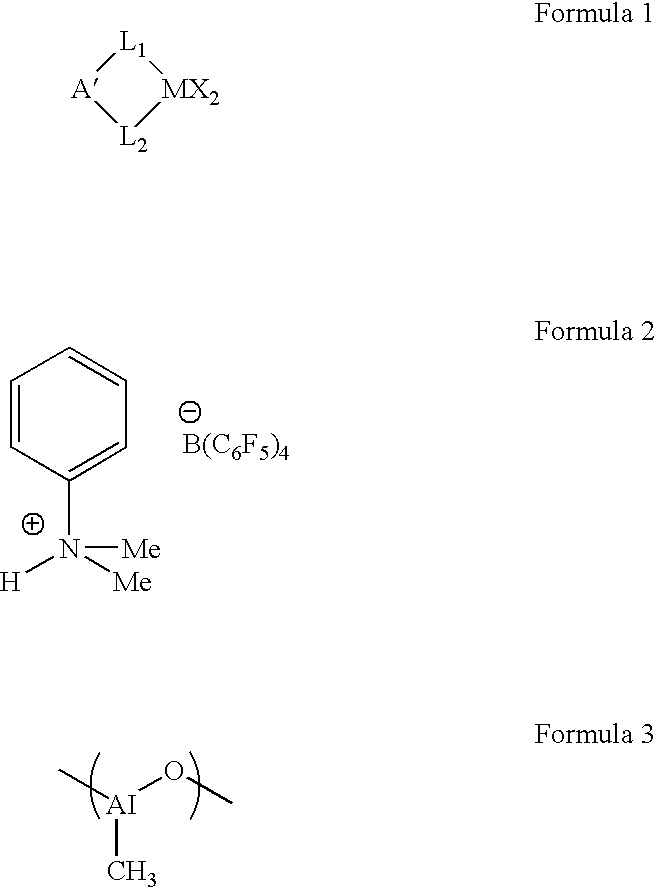Process to produce polyolefins using metallocene catalysts
a metallocene catalyst and polyolefin technology, applied in the field of process to produce polyolefin products with metallocene catalysts, can solve the problems of large waste, difficult and expensive scale up for commercial operation, and special effects of prior art methods, and achieve high yield and cheaply from ethylene. , the effect of producing on-purpos
- Summary
- Abstract
- Description
- Claims
- Application Information
AI Technical Summary
Benefits of technology
Problems solved by technology
Method used
Image
Examples
example 1
[0075]At the end of each polymerization, the metal contents of the polymerization effluent are shown in Table 1. The effluent was treated with 250 ppm water (or alcohol). Then, 1.5 wt % of a solid material Hyflo-SuperCel™ from Celite, which is a kind of diatomaceous earth solid, was added to the reactor effluent. The slurry was stirred at room temperature for 15 minutes. The slurry was filtered to remove solid sorbent. The effluent contained less than 1 ppm of metal catalyst components—Al, Zr, Si and B. The product is clear and white and ready for distillation and further reaction.
[0076]
Polymerization methodABMetal content in polymerization effluent, ppmAl170-60050 to 100Zr1 to 31-4B—0.2-0.5Si0.3 to 1 ppm0.5-1.5
example 5
[0080]A distilled polymerization effluent from polymerization method A consisting of about 98% polymer, less than 2% dimers of alpha-olefin feed and about 360 ppm aluminum from MAO was mixed with 1.5% of diatomaceous earth solid sorbent filter aid Hyflo-SuperCel™ from Celite. The slurry was stirred at room temperature for 15 minutes. The slurry was filtered to remove solid sorbent. The effluent contained about 4 ppm Aluminum. The product is bright and clear and colorless.
example 6
[0081]A polymerization effluent from polymerization method B consisting of about 85% polymer, 13% unreacted olefins, 1% hexane, 1% Toluene, 10 ppm Zirconium and about 80 ppm aluminum from Triisobutyl aluminum was treated with 250 ppm water (or alcohol) and mixed with 1.5% of diatomaceous earth solid sorbent filter aid Hyflo-SuperCel™ from Celite. The slurry was stirred at room temperature for 15 minutes. The slurry was filtered to remove solid sorbent. The effluent contained less than 1 ppm each of Aluminum, Boron, Silicon and Zirconium. The product is bright and clear and colorless and ready for distillation and further reaction.
PUM
| Property | Measurement | Unit |
|---|---|---|
| wt % | aaaaa | aaaaa |
| temperature | aaaaa | aaaaa |
| temperature | aaaaa | aaaaa |
Abstract
Description
Claims
Application Information
 Login to View More
Login to View More - R&D
- Intellectual Property
- Life Sciences
- Materials
- Tech Scout
- Unparalleled Data Quality
- Higher Quality Content
- 60% Fewer Hallucinations
Browse by: Latest US Patents, China's latest patents, Technical Efficacy Thesaurus, Application Domain, Technology Topic, Popular Technical Reports.
© 2025 PatSnap. All rights reserved.Legal|Privacy policy|Modern Slavery Act Transparency Statement|Sitemap|About US| Contact US: help@patsnap.com

